|
|
|
Taylor and Francis
|
Design beautiful, professional-level animated effects with these detailed step-by-step tutorials from former Disney animator and animated effects expert Joseph Gilland. Filled with beautiful, full-color artwork, Elemental Magic, Volume II, breaks down the animated effect process from beginning to end-including booming explosions, gusting winds, magical incantations, and raging fires. He also breaks down the process of effects clean-up, as well as timing and frame rates. The companion website includes real-time footage of the author lecturing as he animates the drawings from the book. In these videos, he elucidates the entire process from blank page to final animation. See it all come to life like never before. Throughout the book, Joseph refers to and includes examples from his own professional work from feature films such as Lilo & Stitch and Tarzan. |
|
Enhance your animated features and shorts with this polished guide to channeling your vision and imagination from a former Disney animator and director. Learn how to become a strong visual storyteller through better use of color, volume, shape, shadow, and light — as well as discover how to tap into your imagination and refine your own personal vision. Francis Glebas, the director of Piglet's Big Day, guides you through the animation design process in a way that only years of expertise can provide. Discover how to create unique worlds and compelling characters as well as the difference between real-world and cartoon physics as Francis breaks down animated scenes to show you how and why to layout your animation. This title helps to find your own personal vision for your animated shorts and feature films with the help of Disney animator and director Francis Glebas — by using color, shape, line quality, and the other elements of the visual structure. Inspirational recipe book helps you generate ideas for stories, style, approaches — harness the power of your imagination by using visual elements to convey your story without words. It is filled with scene breakdowns, practical tips, and how-to guidance to create professional quality animation and includes a companion website with real video examples from a man that helped bring Aladdin, The Lion King, and Pochahontas to life. |

|
From demo reel creation to festival shorts, students and professionals alike are creating animated shorts that are dynamic and eye catching but the time constraints of these shorts are challenging in their own right. The unique format of the animated short of two to five minutes in length presents a practical and aesthetic challenge that is rarely addressed in the classroom. Ideas for the Animated Short is a comprehensive and practical blueprint for creative and unique animated short creation with a focus on the strength of a compelling story. A comprehensive guide to the animated short, this title is an invaluable asset for aspiring animation professionals, students and independent filmmakers. Explore the process of developing a short from conception to final delivery and adapt the industry's best practices in your own workflow. Written by four leading animators, artists and professors, Ideas for the Animated Short is written from the unique perspective of a professional animator adapting creative stories into incredible animated shorts. Follow from start to finish the creation of an animated short from the pre-production thought process to story development and character design. Explore the best practices and avoid the common pitfalls of creating two to five minute shorts. Watch a specially created animated short, demonstrating the core techniques and principles at the companion website! Packed with illustrated examples of idea generation, character and story development, acting, dialogue and storyboarding practice this is your conceptual toolkit proven to meet the challenges of this unique art form. The companion website includes in-depth interviews with industry insiders, short animations (many with accompanying animatics, character designs and environment designs) and an acting workshop to get your animated short off to a flying start! With all NEW content on script writing, acting, sound design and visual storytelling that further enhance your animated shorts and apply the industry best practices to your own projects. |
|
This new and expanded edition builds upon the first edition's powerful multi-perspective approach and breath of coverage. A truly comprehensive introduction to sustainable development, it is designed specifically to allow access to the topic from a wide range of educational and professional backgrounds and to develop understanding of a diversity of approaches and traditions at different levels. This second edition includes: — a complete update of the text, with increased coverage of major topics including ecosystems; — production and consumption; — business; — urban sustainability; — governance; — new media technologies; — conservation; — leadership; — globalization and global crises; — sustainability literacy and learning; — more examples from the Global South and North America, while retaining its unique coverage of first world countries; — chapter aims at the start and summaries at the end of each chapter; — glossary of key terms; — a new chapter on Conservation with a focus on behaviour change and values; — a brand new website which includes discussion of how projects are done on the ground, additional exercises and online cases, test questions and recommended readings and films. Offering boxed examples from the local to the global, Understanding Sustainable Development is the most complete guide to the subject for course leaders, undergraduates and postgraduates. |
|
Moving from basic to more advanced topics, this popular core text has been revised and expanded to reflect recent advances. While giving readers the tools needed to understand and work with random processes, it places greater focus on thermodynamics, especially the kinetics of phase transitions. The chapter on Bose-Einstein condensation has been revised to reflect improvements in the field. The edition also covers stochastic processes in greater depth, with a more detailed treatment of the Langevin equation. It provides new exercises and a complete solutions manual for qualifying instructors. |

|
Many artists are unsure how to bridge the gap between the many basic 'how to draw' books and the more advanced ones dealing with the esoteric details of composition, perspective and anatomy. Force: Animal Drawing is the comprehensive guide to developing artistic animals that are creative, dynamic and anatomical, bridging the gap between foundational art and advanced techniques. Artists and animators alike all find animal inspiration when animating characters — be they human or inhuman. For a unique 'larger than life' character, readers will learn to apply the unique facets of animal movement, locomotion, expressions, facial features, physical build and personality to their traditional and digital art. Readers will also adapt key industry tricks and techniques to personify animal animations with key characteristics of a human's face. Explore the practical application of force theories and learn from today's leading character designers with the included artist interviews and an extended video tutorial via www.drawingforce.com. |
|
A collection of classic and contemporary readings that help define the social and psychological study of intergroup relations. |
|
The Greek World 479-323 BC has been an indispensable guide to classical Greek history since its first publication. Now Simon Hornblower has comprehensively rewritten and revised his original text, bringing it up to date for a new generation of readers. The extensive changes made include the addition of two important new chapters — on Argos, and the Peloponnesian War — and the incorporation of further primary sources. Also new are more than thirty illustrations, the insertion of user-friendly subheadings, and a completely updated bibliography. With valuable coverage of the broader Mediterranean world in which Greek culture flourished, as well as close examination of Athens, Sparta, and the other great city-states of Greece itself, this third edition of a classic work is a more essential read than ever. |
|
An extensive and authoritative study that examines the economic, social and political crises of France during the revolution of 1848. Using analysis of original sources and recent research, Fortescue here offers new interpretations of events leading up to and after the second republic was declared. Looking at Louis Philippe's overthrow, the proclamation of manhood suffrage and the unexpected success of the right-wing in the subsequent elections, this book evaluates the political history of France in 1848 and the French political culture of the time. This should be read by all students of nineteenth century history, political scientists and all those with an interest in the historical development of French political culture. |

|
First published in 1946, History of Western Philosophy went on to become the best-selling philosophy book of the twentieth century. A dazzlingly ambitious project, it remains unchallenged to this day as the ultimate introduction to Western philosophy. Providing a sophisticated overview of the ideas that have perplexed people from time immemorial, Russell's History of Western Philosophy offered a cogent precis of its subject. Of course this cannot be the only reason it ended up the best-selling philosophy book of the twentieth century. Russell's book was long on wit, intelligence and curmudgeonly scepticism, as the New York Times noted, and it is this, coupled with the sheer brilliance of its scholarship, that has made Russell's History of Western Philosophy one of the most important philosophical works of all time. |
|
The impact of economic geography both within and beyond the wider field of geography has been constrained in the past by its own limitations. Drawing together the work of several eminent geographers this superb collection assesses the current state of knowledge in the sub discipline and its future direction. In doing so, the contributor's show how economic geographers have offered explanations that affect places and lives in the broader context of the global economy. Offering a discussion of theoretical constructs and methodologies with the purpose to show the need to combine different approaches in understanding spatial (inter) dependencies, contributors also demonstrate the need to engage with multiple audiences, and within this context they proceed to examine how geographers have interfaced with businesses and policy. This excellent collection moves economic geography from a preoccupation with theory towards more rigorous empirical research with greater relevance for public policy. With excellent breadth of coverage, it provides an outstanding introduction to research topics and approaches. |
|
Communicate your vision, tell your story and plan major scenes with simple, effective storyboarding techniques. Using sketches of shots from classic films, from silents to the present day, John Hart leads you through the history and evolution of this craft to help you get to grips with translating your vision onto paper, from the rough sketch to the finished storyboard. More than 150 illustrations from the author's and other storyboard artists' work illuminate the text throughout to help you master the essential components of storyboarding, such as framing, placement of figures, and camera angles. Plan effectively, communicate clearly and budget accurately with strong storyboards. See how it's done — with more than 150 detailed sketches and storyboards illustrating every point. If you are just starting your filmmaking career and want to get to grips with this vital preproduction tool — let John Hart show you how! |
|
This book introduces the essential qualitative methods used in media research, with an emphasis on integrating theory with practice. Each method is introduced through step-by-step instruction on conducting research and interpreting research findings, alongside in-depth discussions of the historical, cultural, and theoretical context of the particular method and case studies drawn from published scholarship. This text is a comprehensive and accessible introduction to qualitative methods, ideal for media and mass communication research courses. |
|
What's news in one country, may not be of any interest anywhere else. News Values around the World examines how local notions of newsworthiness throughout the world make a crucial difference to what is reported and how it is reported. Examining a wide spectrum of countries based on the central principle of maximizing variation in geographic locations, economic and political systems, languages, size and culture, Pamela J. Shoemaker and Akiba A. Cohen present case studies on journalism in: Australia; Chile; China; China; Germany; India; Israel; Jordan; Russia; South Africa; and the United States. Exhaustively researched, this original book is a must for any journalism student across the English-speaking world. |
|
In industry, miscommunication can cause frustration, create downtime, and even trigger equipment failure. By providing a common ground for more effective discourse, the Dictionary of Oil, Gas, and Petrochemical Processing can help eliminate costly miscommunication. An essential resource for oil, gas, and petrochemical industry professionals, engineers, academic staff, and science and engineering students, the dictionary defines over 5,000 technical and commercial terms encompassing exploration, production, processing, refining, pipelining, finance, management, and safety. From basic engineering principles to the latest drilling technology, the text covers the fundamentals and their real-world applications. Alphabetically arranged for quick reference, it contains easy-to-understand descriptions and figures, as well as oil and gas SI units and metric equivalents. Industry newcomers and personnel with no technical background especially benefit from the book’s practical language that clearly demonstrates the concepts behind the definitions. |

|
In the fifty or so years since the Treaty of Rome, the European Union has evolved far beyond the scope of any other comparable entity. The EU is now a unique model of international cooperation and integration, and its reach extends into almost every sphere of the lives of its half a billion citizens. As well as the establishment of a single market, the Union has its own currency, is developing a foreign policy, and has a growing role in justice and cultural matters. Scholarly work on the European Union has undergone a similarly rapid evolution. For example, with the major expansions of the Union since the end of the Cold War, there has been a huge growth in the range and depth of research into the many challenges of integration. As serious thinking about and around this and other crucial aspects of the European Union continues to flourish and develop, this new title in Routledge’s acclaimed Critical Concepts in Political Science series meets the need for an authoritative reference work to make sense of the subject’s vast literature and the continuing explosion in research output. Edited by Simon Usherwood, a leading EU scholar, it is a five-volume collection of foundational and cutting-edge contributions. The first volume in the collection (‘The Development of the European Union’) assembles the key work on the historical evolution of the European Union from the end of the Second World War to the present day. Even before the Constitutional Treaty proposed in 2004, there was much academic and political discussion about the degree and manner to which the EU transcended traditional political units and the materials gathered in Volume II (‘The Organization of the European Union and the Constitutional Turn’) explore the nature of the Union at this most fundamental level. The third volume in the collection (‘The Institutions of the European Union’) collects the most important research on the institutional structure of the EU. Here, the focus is on the dynamic processes at work within institutions and the models of understanding that academics have developed. Volume IV (‘Member States as Actors in the European Union’), meanwhile, brings together the best work on particular member states, considering, for example, why certain states have remained dominant actors within the Union, despite the scope and depth of EU expansion. In addition, the processes and outcomes which underpin this dominance? such as europeanisation? are also explored. The final volume in the collection (‘Citizens as Actors in the European Union’) concentrates on a very particular feature of the Union: the role of individual citizens. The material gathered here probes issues such as the perceived ‘democratic deficit’ in the Union. Fully indexed and with comprehensive introductions to each thematic part, newly written by the editor, which place the collected material in its historical and intellectual context, The European Union is an essential work of reference. It is destined to be valued by political science scholars and researchers? as well as by EU specialists and policy-makers? as a vital one-stop research tool. |
|
How do books, newspapers, music recordings, movies, television shows, and online sites get made? How does content in different media get funded, produced and delivered to the right audiences? Why do certain materials and not others get created and distributed in different media? What role do governments (federal, state, local) play in the process? (This book) addresses these and related questions with concrete examples from a wide variety of mass media — from books to cable television, highway billboards to online services. The text tracks, among other developments, the explosion of competition among new and old media, pressures toward greater and greater conglomeratization among media firms, the need to increasing segment audiences, and their obligation to expand global sales. Students need to understand what is happening, why, and with what possible consequences for society. |
|
This intriguing new book examines and analyses the role of critical realism in economics and specifically how this line of thought can be applied to the real world. With contributions from such varying commentators as Sheila Dow, Wendy Olsen and Fred Lee, this new book is unique in its approach and will be of great interest to both economic methodologists and those involved in applied economic studies. |

|
Despite the exponential growth of computing and communications technology, the inertia of old business technology management practices still drives most investment decisions in this area. Companies spend too much money on new technology, while their business models and processes underutilize the resources they already have. Written in a compelling, conversational manner, Best Practices in Business Technology Management advises those who buy, install, and support all types of computing and communications technology, empowering them to optimize their systems in new and innovative ways. Divided into six chapters, the book provides insight into the field, discussing decision-making, trends, alignment, optimization, processes, timing, and other areas. It includes practical hands-on advice that explores organization, the challenges of working with people, acquisition and measurement of technology, operational effectiveness, and strategic effectiveness. The best practices presented are not theoretical or untested. Rather, they are the result of trench warfare and real applications. The insights contained in this volume represent what successful companies have done?and continue to do?to optimize the business technology relationship. A nationally-known business technology veteran, author Stephen J. Andriole has developed a perspective on the optimization of computing and communications technology based on years of experience from government, industry, academia, and the venture capital business. In this book, he demonstrates how those who buy and deploy technology can optimize their technology in a way that saves costs and provides maximum performance. |
|
This collection brings together leading economists from around the world to explore key issues in economic analysis and the history of economic thought. This book deals with important themes in economics in terms of an approach that has its roots in the works of the classical economists from Adam Smith to David Ricardo. The chapters have been inspired by the work of Neri Salvadori, who has made key contributions in various areas including the theory of production, the theory of value and distribution, the theory of economic growth, as well as the theory of renewable and deplorable natural resources. The main themes in this book include production, value and distribution; endogenous economic growth; renewable and exhaustible natural resources; capital and profits; oligopolistic competition; effective demand and capacity utilization; financial regulation; and themes in the history of economic analysis. Several of the contributions are closely related to the works of Neri Salvadori. This is demonstrated with respect to important contemporary topics including the sources of economic growth, the role of exhaustible resources in economic development, the reduction and disposal of waste, the redistribution of income and wealth, and the regulation of an inherently unstable financial sector. All contributions are brand new, original and concise, written by leading exponents in their field of expertise. Together this volume represents an invaluable contribution to economic analysis and the history of economic thought. This book is suitable for those who study economic theory and its history, political economy as well as philosophy. |
|